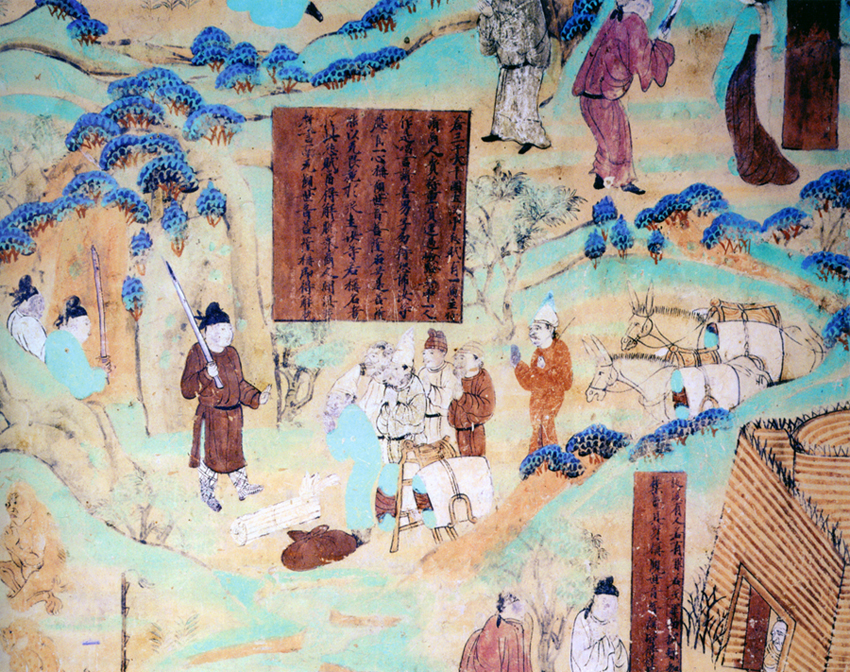Visual Source 7.1
Silk Road Merchants Encounter Bandits
Among the first things that impressed travelers on the Silk Roads were the dangers from nature and man alike. Much of the route passed through harrowing terrain. Traveling from China to India in the seventh century, Xuangzang (see Document 7.1) encountered mountains “so dangerously steep and tall that they seem to touch the sky.” Marco Polo traversed a desert that appeared endless, where water was scarce and “birds and beasts there are none,” and where sandstorms and hallucinations were a peril to travelers. Furthermore when armies clashed or political authority broke down, human threats were added to those of nature.
Visual Source 7.1 shows such an occasion. An eighth-century painting, it was discovered in the Magao Caves near Dunhuang, a major stop on the Silk Roads and a center of Buddhist art and learning. It depicts a group of Tibetan and Central Asian merchants (on the right) who have encountered bandits or avaricious border guards (on the left). Required to unload their goods, they await their fate—an extortionate payment, robbery of their goods, or maybe death. But in the Buddhist culture that pervaded much of the Silk Road network, legend had it that a wealthy merchant had gained safety during his travels by invoking the assistance of the bodhisattva Guanyin. (See Visual Source 4.3 for a Japanese image of this bodhisattva of compassion.) The panel above the merchants reads in part: “If you all call upon his name, then from the malicious bandits you shall contrive to be delivered. . . . Men, by the mere calling upon his name, they shall forthwith gain deliverance.”36

Question
What message did this painting seek to convey?
Question
What else might you learn about the Silk Roads from this image?
Question
What might have been the possible outcomes to the story that this scene describes?